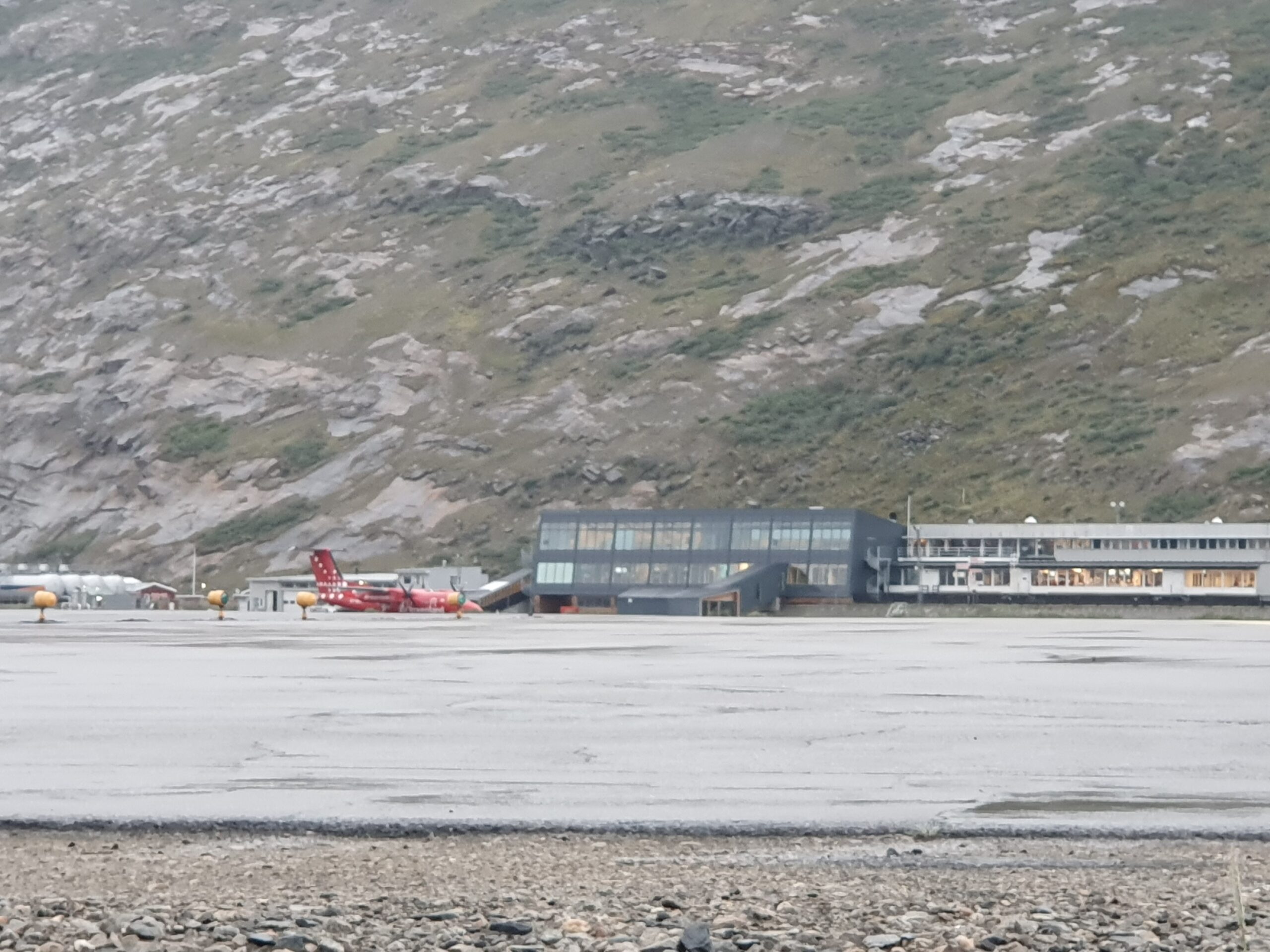Connections and Disconnections: The Opening of Greenland’s International Airport in Nuuk
By Susan Vanek
All eyes were on the sky as the first large international aircraft neared the newly extended 2,200-meter runway in Nuuk, the capital of Greenland, on November 28, 2024. The landing of the flight, preceded by an inaugural ribbon-cutting ceremony, marked the official opening of the airport and the beginning of the city’s new role as an international air hub for the country. The event was the culmination of over a decade of promises, planning, and disputes surrounding changes to the country’s air traffic network.

Envisioned as a means to encourage trade, tourism, and foreign interest and investment in the world’s largest island, the airport expansion plan aims to increase Greenland’s international connections while moving the island closer to full independence. The completed airport expansion in Nuuk, along with a similar project underway in Ilulissat, are anticipated to bring a surge of economic growth that will aid in freeing the country from its economic ties to Denmark. However, even as these projects have been met with praise by most politicians in Greenland and many of the cities’ residents, they have also been the subject of controversy both within and outside the country. The cost and logistics of the projects, their potential to realign the island’s air traffic network, and the possibility of waves of tourists descending on the country of under 57,000 inhabitants have all been sources of concern and criticism as ongoing infrastructural changes reshape the island and its future.
To understand the broader influence of Greenland’s airport expansion on the country as a whole, one must appreciate the role of air travel in connecting the island internally and globally. Although Greenland ranks as the 12th largest country in the world with a total landmass of 2,166,086 km², there are no roads or railways that connect the over 70 communities that dot the island’s coasts. With its interior covered by a massive ice sheet, much of its exposed land consisting of rocky and mountainous terrain, and Arctic weather conditions and seasonal patterns, aviation has become the primary form of mass transportation in the country. Flights in Greenland, as in much of the Arctic, are not a luxury but a necessity – ferrying patients to and from large medical facilities, carrying fresh food and other staples to villages and towns largely isolated in winter months, allowing families to visit, and supporting trade, business, and broader connections to the globe.


Greenland’s 13 airports and 43 heliports are the backbone of this highly interwoven network. It is a web of connections interlinked with the island’s colonial past as well as aspirations for its independent future that the ongoing airport expansions are unraveling and reworking, sparking anxiety that some towns and villages will have greater connections while others will be limited or even displaced. This fear of disconnection has been long-standing in the community of Kangerlussuaq, home to the country’s previous international airport. Once the site of a WWII-era American military base, the town grew with the international airport from a group of disconnected young people in the early 1990s to a community of families today. However, with the opening of Nuuk’s expanded airport, Kangerlussuaq is losing its role as the primary air traffic hub for the country, imperiling the town’s tourist industry as well as other businesses that rely on air traffic to support the town of approximately 500 residents.

Aside from the possible effects of ongoing infrastructural changes on travel between towns and villages, a number of other concerns surround the airport expansions in Nuuk and Ilulissat. The cost of the project, the use of Greenland’s limited funds to support it, and the debt the country will accrue from construction-related loans have brought criticism from Denmark and within Greenland while the inclusion of a Chinese firm on the list of possible construction contractors sparked international worry about possible foreign influence on the island. Even in Nuuk, the project has been met with some criticism as the location of the extended runway brought protest from a citizens group, and worry over the possibility of overwhelming numbers of foreign visitors and tour operators persists. Yet, excitement and hope for a more international future remain dominant in the city.
In the months leading up to the opening of the new Nuuk airport, speculation abounded about new opportunities for business and education, cheaper flights, more connections, new products, and a future free from the constraints of the country’s colonial-era infrastructure. Periodic announcements, such as notice of a direct United Airlines flight route to the United States opening in the summer of 2025, have served to bolster these feelings of hope and possibility as have the construction of new hotels and restaurants in the city. Public events following the progress of the project, like the tour of the newly completed international terminal in June 2024, have also served to maintain public engagement with the airport expansion and to keep excitement high.
The landing of Tuukkaq, Air Greenland’s new A330-neo Airbus, on November 28 was the next step in this infrastructural reshaping of the country, a process that has elicited hopes and fears about the country and its future.









Please login to post a comment...